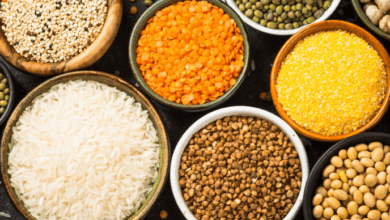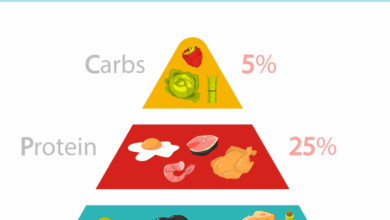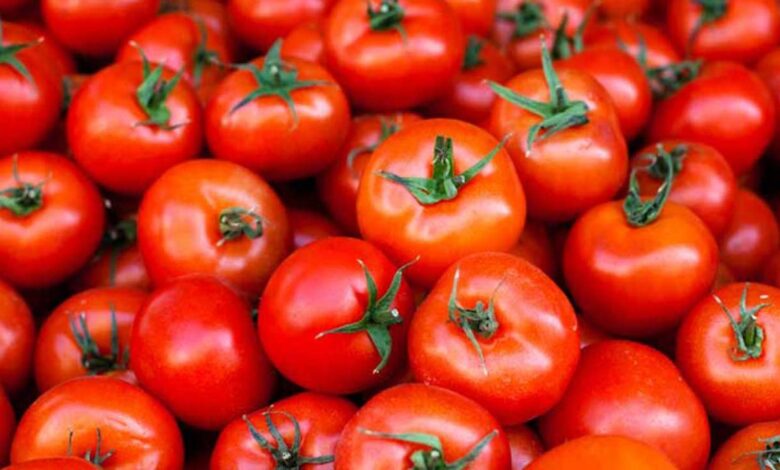
Are tomatoes good for you? Absolutely! This comprehensive exploration delves into the nutritional powerhouse that is the humble tomato, examining its vitamins, minerals, potential health benefits, and even potential drawbacks. We’ll explore various types, preparation methods, and their roles in different diets. From culinary uses to growing tips, we cover it all, providing a well-rounded understanding of this versatile vegetable.
Tomatoes are packed with nutrients, including vitamins A and C, and potassium. They’re a delicious and easy way to add flavor and health benefits to your diet. We’ll examine the specific nutrients and their impact on your body, along with the potential benefits and risks. This investigation also delves into how preparation methods and different tomato types can influence their nutritional profile.
Nutritional Value
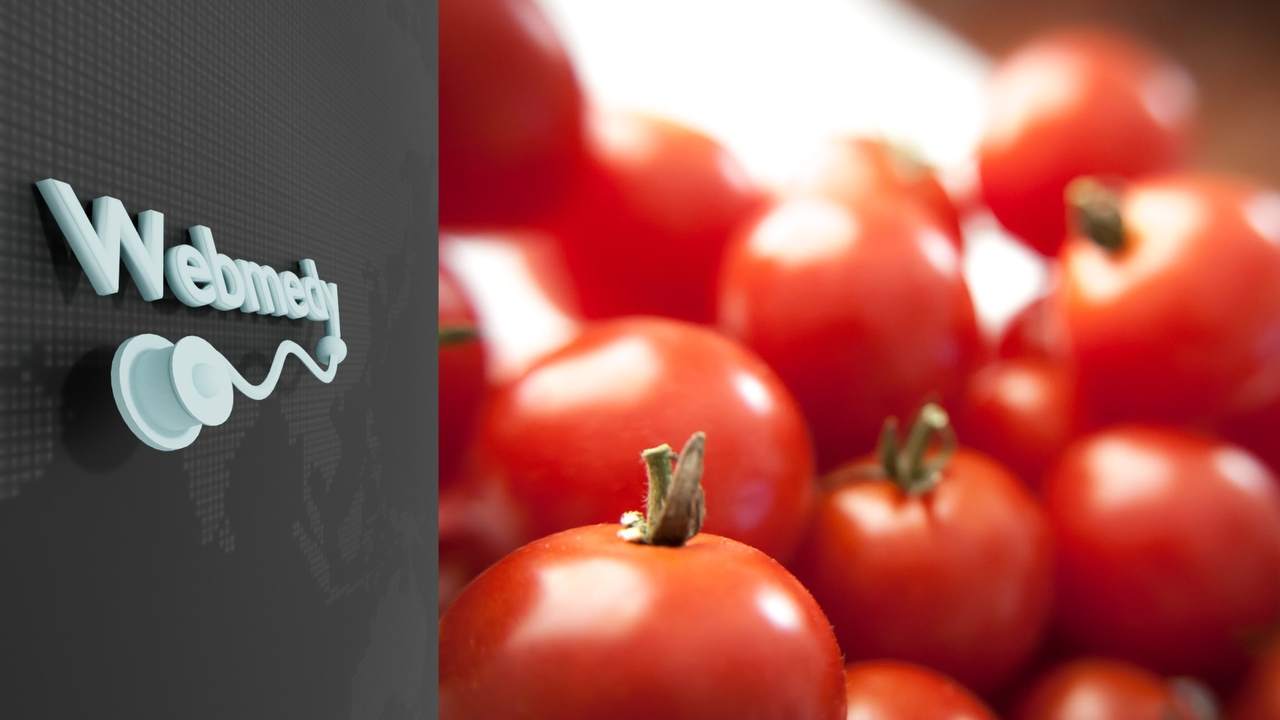
Tomatoes, those vibrant red jewels of the kitchen, are far more than just a delicious addition to your meals. They pack a surprising punch of essential nutrients, contributing significantly to a healthy diet. From vitamins to minerals, tomatoes offer a diverse range of benefits for your overall well-being. Let’s delve into the specifics of their nutritional composition.
Vitamins and Minerals
Tomatoes are a powerhouse of vitamins and minerals, providing a wide range of benefits for your body. They contain essential nutrients that support various bodily functions, from boosting immunity to maintaining healthy skin. Their impressive nutritional profile makes them a valuable addition to any balanced diet.
| Nutrient | Amount (per 100g serving) | Benefits |
|---|---|---|
| Vitamin C | 10-20 mg | A potent antioxidant, supporting immune function, collagen production, and wound healing. A crucial vitamin for overall health. |
| Vitamin A (as beta-carotene) | 0.5-1 mg | Essential for healthy vision, cell growth, and immune function. Beta-carotene is a precursor to Vitamin A, meaning your body converts it into Vitamin A as needed. |
| Potassium | 200-300 mg | Plays a vital role in regulating blood pressure and maintaining healthy fluid balance. Crucial for heart health. |
| Lycopene | 3-10 mg | A powerful antioxidant that may help protect against chronic diseases. Lycopene is a carotenoid that gives tomatoes their vibrant red color. It’s often associated with reduced risk of certain cancers. |
| Vitamin K | 0.01-0.1 mg | Important for blood clotting and bone health. |
| Folate | 15-25 mcg | Crucial for cell growth and development, particularly during pregnancy. Important for preventing neural tube defects in developing fetuses. |
| Manganese | 0.05-0.1 mg | Supports healthy bones and metabolism. |
| Phosphorus | 10-20 mg | Important for strong bones and teeth, as well as energy production. |
Types of Nutrients and Their Roles
Tomatoes contain a variety of nutrients, each playing a specific role in maintaining overall health. These nutrients contribute to a diverse range of bodily functions, from supporting immune response to promoting healthy skin and vision.
- Antioxidants: Tomatoes are rich in antioxidants like lycopene, vitamin C, and vitamin A. These compounds help protect cells from damage caused by free radicals, potentially reducing the risk of chronic diseases like heart disease and certain cancers. Consider adding tomatoes to your diet for a powerful antioxidant boost.
- Vitamins: Tomatoes provide a good source of vitamins essential for various bodily functions. Vitamin C, in particular, plays a vital role in immune function, while vitamin A supports vision and cell growth. Regular consumption of tomatoes can contribute to maintaining optimal vitamin levels.
- Minerals: Minerals like potassium, manganese, and phosphorus are present in tomatoes, contributing to maintaining healthy blood pressure, bone health, and energy production. These minerals are crucial for various bodily functions and should be considered part of a balanced diet.
Nutritional Information Breakdown
The nutritional content of tomatoes can vary slightly based on factors such as growing conditions and ripeness. However, a typical 100-gram serving provides a good amount of essential nutrients. The table above summarizes the nutritional information in a convenient format, providing a detailed overview of the vitamins, minerals, and other nutrients present. This information can be used to understand the nutritional contributions of tomatoes to a healthy diet.
Tomatoes are a nutritional powerhouse, packed with vitamins and antioxidants. But are they as sugar-laden as other fruits and veggies? To get a better understanding of their nutritional profile, I highly recommend taking a look at this fun quiz: quiz what has more sugar. It will help you compare the sugar content of various foods, and then you can decide if tomatoes are truly a healthy addition to your diet.
Ultimately, tomatoes are a fantastic addition to a balanced diet, offering plenty of benefits without excessive sugar.
Health Benefits: Are Tomatoes Good For You
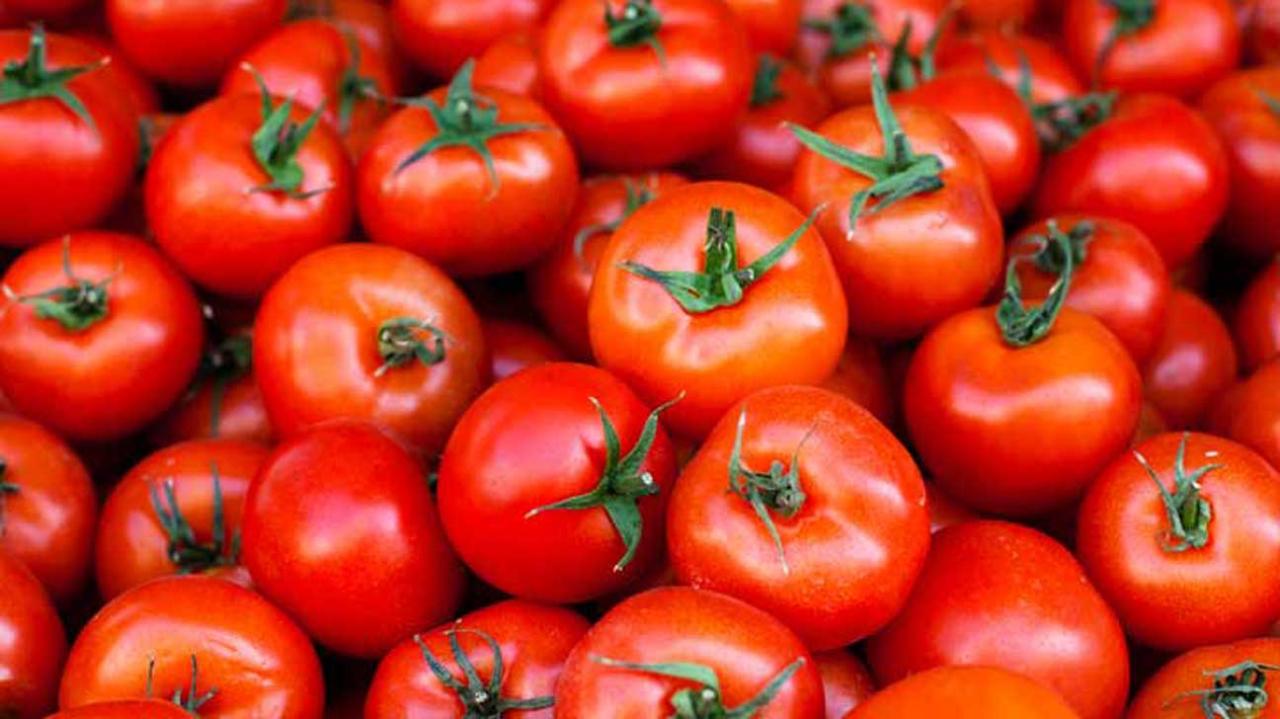
Tomatoes, a vibrant and versatile fruit (technically a berry!), are more than just a delicious addition to your plate. They pack a powerful punch of nutrients, contributing significantly to overall well-being. Beyond their delightful taste, tomatoes boast a remarkable array of health benefits, particularly due to their rich antioxidant content. This exploration delves into the potential advantages of incorporating tomatoes into your diet, highlighting the role of lycopene and the overall positive impact on various aspects of health.
Lycopene and Disease Prevention
Lycopene, a potent carotenoid pigment responsible for the vibrant red color of tomatoes, plays a crucial role in protecting the body from cellular damage. Its antioxidant properties help neutralize harmful free radicals, thereby reducing the risk of chronic diseases. Studies have shown a strong correlation between higher lycopene intake and a decreased incidence of certain cancers, particularly prostate cancer.
The body absorbs lycopene more efficiently when tomatoes are cooked, enhancing its beneficial effects. The bioavailability of lycopene is also improved when consumed with healthy fats, such as those found in olive oil.
Heart Health Benefits
Tomatoes contribute to cardiovascular health through their potassium content, which helps regulate blood pressure. This crucial mineral assists in maintaining healthy blood vessels and reducing the risk of hypertension. The presence of antioxidants like lycopene further supports heart health by reducing oxidative stress, which is a major contributor to heart disease. A diet rich in tomatoes, along with other heart-healthy foods, can significantly reduce the risk of cardiovascular problems.
Tomatoes are packed with vitamins and antioxidants, making them a healthy addition to your diet. But if you’re looking to boost your fertility, cutting back on fast food is crucial. Studies show a strong link between a diet rich in processed foods and reduced fertility, and swapping those sugary snacks for nutrient-rich options like tomatoes can make a real difference.
Check out this article on how giving up fast food can improve your chances of conception: boost your fertility give up fast food. Ultimately, incorporating more whole foods like tomatoes into your diet, along with a healthy lifestyle, is key for overall well-being and potential fertility.
Vision and Immunity Support
Tomatoes provide essential vitamins and minerals that support eye health and a robust immune system. Vitamin A, found in tomatoes, is crucial for maintaining healthy vision. The antioxidants in tomatoes contribute to immune function by strengthening the body’s defenses against infection. Regular consumption of tomatoes, part of a balanced diet, can support both vision and immunity.
Raw vs. Cooked Tomatoes: A Comparison
The method of preparation can influence the bioavailability of nutrients in tomatoes. While raw tomatoes offer their fresh taste and nutrients, cooking tomatoes, particularly with fats like olive oil, enhances the absorption of lycopene. This means that while raw tomatoes provide benefits, cooked tomatoes, especially when paired with healthy fats, can potentially offer a more significant impact on the body’s utilization of beneficial nutrients.
This effect on absorption is a key factor to consider when evaluating the overall health benefits of tomato consumption.
Summary of Health Benefits and Evidence
| Health Benefit | Scientific Evidence |
|---|---|
| Reduced risk of certain cancers (e.g., prostate cancer) | Numerous studies show a correlation between higher lycopene intake and reduced cancer incidence. |
| Improved cardiovascular health (e.g., reduced blood pressure) | Studies demonstrate the positive impact of potassium and antioxidants on cardiovascular health. |
| Enhanced vision | Vitamin A, a component of tomatoes, is essential for maintaining healthy vision. |
| Strengthened immunity | Antioxidants in tomatoes support the body’s defense mechanisms against infection. |
| Improved lycopene absorption with cooking | Studies indicate increased bioavailability of lycopene when tomatoes are cooked, particularly with healthy fats. |
Potential Drawbacks
While tomatoes are generally a healthy addition to a balanced diet, there are potential drawbacks to consider. Some individuals may experience adverse effects, such as allergic reactions or digestive issues, while others might encounter interactions with certain medications. Understanding these potential downsides can help individuals make informed choices about tomato consumption.Consuming too much of any food, even a healthy one like tomatoes, can lead to problems.
It’s crucial to be mindful of individual tolerances and potential sensitivities when incorporating tomatoes into your diet.
Allergic Reactions and Sensitivities
Tomato allergies, although less common than some other food allergies, can manifest in various ways. Symptoms can range from mild skin reactions like hives or itching to more severe symptoms such as swelling of the throat or face, difficulty breathing, or even anaphylaxis. Cross-reactivity with other plants in the nightshade family, like potatoes and eggplant, is a possibility. Individuals with known allergies to these plants should exercise caution when consuming tomatoes.
Digestive Issues
Tomatoes, rich in fiber and acidity, can sometimes trigger digestive discomfort in some individuals. This can include bloating, gas, diarrhea, or stomach cramps. The amount of fiber and acidity present in a tomato can vary depending on the ripeness and preparation method. For example, raw tomatoes often contain more fiber than cooked ones, and acidic tomato sauces may be more problematic for individuals with sensitive stomachs.
Interactions with Medications
Certain medications, particularly those affecting blood pressure or blood sugar, may interact with components found in tomatoes. For example, some blood pressure medications can be affected by the potassium content of tomatoes. Individuals taking these medications should consult their doctor before significantly increasing their tomato intake.
Potential Side Effects and Precautions
Some possible side effects of consuming tomatoes, though rare, include kidney stones in individuals with a history of these issues or those consuming excessive amounts of tomatoes. The acidity of tomatoes can also irritate the esophagus or stomach lining in some individuals.
- Caution with high doses: While tomatoes are generally safe, consuming very large quantities of tomatoes might trigger digestive problems. This is especially true for individuals with pre-existing conditions or sensitivities.
- Individual sensitivity: Every individual reacts differently to food. Pay attention to your body’s response to tomatoes and adjust your intake accordingly. If you experience any discomfort, reduce or eliminate tomatoes from your diet.
- Consult a healthcare professional: If you have any underlying health conditions or are taking medications, consult your doctor or a registered dietitian before significantly increasing your tomato consumption.
Different Types and Preparation Methods
Tomatoes, a beloved and versatile ingredient, come in a surprising array of varieties, each with its own unique characteristics and flavor profiles. Beyond the familiar red heirloom, a treasure trove of shapes, colors, and textures awaits. Exploring these differences allows us to appreciate the nuanced nutritional contributions of each type and understand how preparation methods impact their overall value.Different tomato varieties exhibit variations in their nutritional compositions, affecting the vitamins, minerals, and antioxidants they provide.
Choosing the right type for a specific dish or dietary need becomes more insightful when considering these variations. Likewise, understanding how preparation methods affect the bioavailability of nutrients enhances the nutritional value of our tomato consumption.
Tomato Varieties
Various tomato types exist, each with distinctive traits. Cherry tomatoes, for instance, offer a compact and sweet profile, while beefsteak tomatoes boast a succulent, juicy texture and robust flavor. These differences in structure and taste are mirrored in their culinary uses. Understanding these variations is key to maximizing their flavor and nutritional impact in our recipes.
Tomatoes are packed with vitamins and antioxidants, making them a healthy addition to any diet. But, sometimes, our bodies react in unexpected ways. For example, some people might experience mood swings that could be a sign of something more serious, like mania in bipolar. Understanding the symptoms and how to manage them is crucial, and resources like this guide on what is mania in bipolar can be incredibly helpful.
Ultimately, while tomatoes are generally good for you, always listen to your body and consult a doctor if you have concerns.
- Cherry Tomatoes: These small, round tomatoes are often used in salads, salsas, or as a quick snack. Their sweetness and compact size make them ideal for adding a burst of flavor to various dishes.
- Beefsteak Tomatoes: Large, meaty tomatoes, these varieties are often appreciated for their juicy texture and robust flavor, ideal for sandwiches, burgers, or grilling.
- Roma Tomatoes: Known for their plum-like shape and concentrated flavor, these are excellent for sauces, soups, and purees due to their ability to hold their shape during cooking.
- Heirloom Tomatoes: These often display a range of colors, shapes, and flavors, showcasing the genetic diversity of the tomato. Their unique profiles offer distinct tastes and textures, making them attractive for both culinary exploration and preservation.
Nutritional Differences Between Varieties
While all tomatoes provide essential vitamins and minerals, their content can differ slightly depending on the variety. For example, some varieties might have a higher concentration of lycopene, an antioxidant associated with various health benefits. These nuances highlight the importance of considering variety selection when aiming for specific nutritional goals.
Preparation Methods and Nutritional Impact
The way tomatoes are prepared can significantly influence their nutritional value. Raw tomatoes, for instance, retain their vitamins and minerals more directly than cooked tomatoes, although cooking can increase the bioavailability of certain nutrients, like lycopene.
- Raw: Eating tomatoes raw allows for the direct intake of their nutrients, retaining vitamins and minerals in their natural state. The fresh crunch and vibrant flavor of raw tomatoes are perfect for salads, salsas, and as a standalone snack.
- Cooked: Cooking tomatoes, especially when heated, can increase the absorption of lycopene, a potent antioxidant. This method is often used in sauces, soups, and stews, maximizing the flavor and potential nutritional benefits.
- Juiced: Juicing tomatoes extracts the juice and pulp, providing a concentrated dose of nutrients. This preparation method is often used for smoothies, drinks, and as a base for sauces.
Tomato Types, Characteristics, and Preparation Methods
| Tomato Type | Characteristics | Typical Preparation Methods |
|---|---|---|
| Cherry Tomatoes | Small, round, sweet | Salads, salsas, snacks, sandwiches |
| Beefsteak Tomatoes | Large, meaty, juicy | Sandwiches, burgers, grilling, salads |
| Roma Tomatoes | Plum-like, concentrated flavor | Sauces, soups, purees, stews |
| Heirloom Tomatoes | Varied colors, shapes, flavors | Salads, sauces, sandwiches, fresh consumption |
Tomatoes in Different Diets
Tomatoes, a versatile and flavorful fruit, seamlessly integrate into various dietary approaches. Their nutritional richness, coupled with their adaptability in culinary creations, makes them a valuable addition to diverse meal plans. From vibrant salads to hearty stews, tomatoes can elevate any dish, providing a delightful burst of flavor and essential nutrients. Their adaptability extends to diverse cuisines, from the Mediterranean to Indian, showcasing their culinary prowess.
Vegetarian and Vegan Diets
Tomatoes are a fantastic source of vitamins and minerals for vegetarians and vegans. They are naturally low in fat and calories, making them a healthy choice for those looking to maintain a balanced diet. Their versatility in cooking allows for easy incorporation into a wide array of vegetarian and vegan dishes, from pasta sauces to vegetable stir-fries. The lack of animal products in these diets doesn’t diminish the significant nutritional value tomatoes offer.
Mediterranean Diet
The Mediterranean diet emphasizes fresh, whole foods, and tomatoes are a cornerstone. Rich in lycopene, a powerful antioxidant, tomatoes are often featured in salads, soups, and sauces, complementing other staples like olive oil, lean protein, and whole grains. The high consumption of tomatoes in this diet contributes to heart health and overall well-being, aligning with the diet’s core principles.
Their vibrant presence in Mediterranean cuisine reflects their significance in maintaining a balanced and healthy lifestyle.
Incorporating Tomatoes into Meal Plans
Tomatoes are incredibly versatile and can be incorporated into various meal plans. They can be enjoyed raw in salads, added to soups and stews, or used as a base for sauces. Their versatility in cooking methods allows for customization to fit individual preferences and dietary needs. Whether roasted, grilled, or simply sautéed, tomatoes provide a delectable and healthy addition to any meal.
Tomato Recipes Across Cuisines
Tomatoes feature prominently in numerous cuisines worldwide. In Italian cuisine, they are used to create classic tomato sauces for pasta dishes, while in Indian cuisine, they are often used in flavorful curries and chutneys. The vibrant flavors and textures of tomatoes allow them to be used in a myriad of dishes, adding a unique dimension to each culinary experience.
Here are a few examples:
- Italian Tomato Pasta Sauce: Sautéed garlic and onions are combined with diced tomatoes, herbs, and spices to create a rich and flavorful sauce for pasta. This simple recipe highlights the versatility of tomatoes in Italian cooking.
- Indian Tomato Curry: Tomatoes are often blended with spices and other vegetables to create a fragrant and savory curry. The combination of spices with the sweetness of the tomatoes creates a complex and flavorful dish.
- Mediterranean Tomato Salad: Fresh tomatoes are combined with cucumbers, olives, feta cheese, and a simple vinaigrette for a light and refreshing salad. This dish showcases the fresh flavor profile of tomatoes in Mediterranean cuisine.
Tips for Incorporating Tomatoes into a Healthy Diet
To maximize the benefits of tomatoes, consider these tips:
- Variety is key: Experiment with different ways to prepare tomatoes, from raw salads to cooked dishes, to enjoy their diverse flavor profiles.
- Choose ripe tomatoes: Look for tomatoes that are firm, have a vibrant color, and give slightly when gently pressed. This ensures a sweeter and more flavorful taste.
- Eat them often: Incorporate tomatoes into your diet regularly to benefit from their nutritional content and antioxidants.
Dietary Plans and Tomato Usage
The following table Artikels potential tomato usage in various dietary plans.
| Dietary Plan | Tomato Usage |
|---|---|
| Vegetarian | Excellent source of vitamins and minerals, can be incorporated into various dishes. |
| Vegan | Naturally low in fat and calories, adaptable to diverse dishes. |
| Mediterranean | A cornerstone of the diet, used in salads, soups, and sauces. |
| General Healthy Diet | Versatile addition to a balanced diet, adding flavor and nutrients. |
Culinary Uses and Recipes
Tomatoes, a vibrant and versatile fruit, are a cornerstone of countless cuisines worldwide. Their juicy texture, tangy flavor, and inherent nutritional value make them a desirable ingredient in everything from savory sauces to refreshing salads. This section delves into the diverse culinary applications of tomatoes, highlighting the best ways to prepare them and showcasing a variety of dishes.
Tomato-Based Sauces
Tomato sauces are a ubiquitous element in many cultures. Their rich flavor profiles, from mild and sweet to intensely savory, add depth and complexity to countless dishes. Proper preparation is key to achieving a delicious and nutritious sauce. Slicing or dicing tomatoes evenly ensures consistent cooking and flavor extraction. Using fresh tomatoes, when possible, is ideal for maximizing flavor.
Adding herbs and spices during the cooking process further enhances the sauce’s taste and aroma.
Tomato-Based Soups
Tomato soups offer a hearty and satisfying meal, providing a comforting warmth and a burst of flavor. A smooth, velvety texture can be achieved by blending the cooked tomatoes with other ingredients, such as broth, cream, or herbs. For a richer taste, consider using roasted tomatoes, which caramelize and develop deeper flavors. Different cooking methods, such as simmering or pureeing, yield different results.
Simmering allows for a more intense flavor concentration, while pureeing creates a smoother consistency.
Tomato-Based Salads
Tomatoes add a burst of freshness and acidity to salads. Their juicy texture contrasts well with crisp greens and other ingredients. Different types of tomatoes, such as cherry tomatoes or heirloom varieties, offer diverse textures and flavors. The best way to incorporate tomatoes into salads is to slice or dice them depending on the desired outcome. A simple vinaigrette or a more complex dressing can elevate the salad’s overall taste and enhance the tomato’s flavor.
Consider pairing tomatoes with other fresh vegetables, such as cucumbers, bell peppers, and onions, for a balanced and flavorful salad.
Other Tomato Dishes
Tomatoes are adaptable to various other dishes. Their versatility allows them to be incorporated into pasta dishes, pizzas, or even as a filling in vegetarian or vegan dishes. Different cooking methods can transform tomatoes, from grilling to baking to frying. Each method results in a distinct flavor profile. For example, grilling tomatoes adds a smoky flavor, while baking them brings out their sweetness.
Frying tomatoes can create a crisp texture and a deep flavor.
Example Dishes Featuring Tomatoes
| Dish | Ingredients (Key Ingredients in Bold) |
|---|---|
| Tomato Basil Pasta | Pasta, tomatoes, basil, garlic, olive oil, salt, pepper |
| Roasted Tomato Soup | Tomatoes, vegetable broth, onion, garlic, herbs, olive oil |
| Caprese Salad | Tomatoes, mozzarella, basil, balsamic glaze |
| Tomato and Mozzarella Pizza | Pizza dough, tomatoes, mozzarella, oregano |
Unique Tomato Recipes
A simple yet flavorful recipe is to roast diced tomatoes with garlic, herbs, and olive oil. This results in a concentrated flavor and a beautiful deep color. Alternatively, consider a vibrant tomato salsa. This salsa can be served as a topping for tacos or as a flavorful dip. A key element is to use a variety of fresh herbs and spices to create a unique flavor profile.
Growing and Sourcing Tomatoes
From the tiny seed to the juicy, vibrant fruit, the journey of a tomato is fascinating. Understanding the process of growing tomatoes, from choosing the right variety to nurturing them through their life cycle, allows us to appreciate the factors that influence flavor and quality. Furthermore, knowing how to source high-quality tomatoes empowers us to make informed choices that support sustainable and ethical farming practices.The methods employed in cultivating tomatoes, whether traditional or innovative, significantly impact the final product.
Different growing conditions, including climate, soil type, and water availability, directly influence the taste, texture, and nutritional content of the tomatoes. By exploring these aspects, we can gain a deeper appreciation for the complex relationship between the environment and our food.
Tomato Growing Methods, Are tomatoes good for you
Different growing methods offer unique advantages and disadvantages, each influencing the final product. Choosing the right method depends on factors like available space, climate, and resources. Understanding the specifics of each method allows for informed decisions about the best approach for a given situation.
- Traditional Open-Field Growing: This method involves planting tomato seeds or seedlings directly into the ground. It’s a common practice, often favored for its connection to nature. Factors like soil quality, sunlight exposure, and water availability are critical for success.
- Hydroponics: Hydroponic systems grow plants without soil, using nutrient-rich water solutions. This method allows for precise control over the environment, leading to faster growth and higher yields in controlled conditions. It can be especially beneficial in areas with limited space or challenging soil conditions. However, careful monitoring of nutrient levels and water quality is essential.
- Vertical Gardening: This method maximizes space utilization by stacking plants vertically. It is particularly suitable for urban environments or individuals with limited garden space. Vertical structures often require specialized supports and careful plant spacing to ensure proper air circulation and sunlight access. Vertical gardens also often require more careful monitoring to avoid overwatering and pests.
Sourcing High-Quality Tomatoes
Selecting high-quality tomatoes involves considering factors beyond just appearance. Examining the growing conditions, the farmer’s practices, and the overall sourcing process can lead to a more flavorful and nutritious product.
- Local Farmers Markets: These markets often feature locally grown produce, offering a chance to connect directly with the farmer and learn about their growing methods. This direct connection often results in fresh, flavorful tomatoes with a higher nutritional value. However, availability may be limited depending on the season and location.
- Community Supported Agriculture (CSA) Programs: These programs connect consumers with local farms, providing a steady supply of fresh produce throughout the growing season. Consumers often receive a box of produce, including tomatoes, with information about the farm and growing practices. This allows consumers to be more aware of the origin and quality of their produce.
- Certification and Labels: Look for certifications like organic or Fair Trade, which indicate farming practices that prioritize environmental sustainability and worker welfare. These certifications often guarantee better quality and ethical practices.
Impact of Growing Conditions on Tomato Quality
The environment in which tomatoes are grown profoundly impacts their quality. Factors like sunlight, temperature, and water availability directly influence the taste, texture, and nutritional content of the final product.
- Sunlight: Sufficient sunlight is crucial for photosynthesis, which directly affects the tomato’s sugar content and flavor. Insufficient sunlight can lead to smaller, less flavorful tomatoes.
- Temperature: Optimum temperatures are essential for proper growth and development. Extreme temperatures can negatively affect the size, shape, and flavor of the tomatoes.
- Water Availability: Adequate water is vital for the plant’s growth and the development of the fruit. Overwatering or underwatering can both result in poor-quality tomatoes.
Growing Methods Comparison
| Growing Method | Benefits |
|---|---|
| Traditional Open-Field | Connection to nature, potentially lower costs, readily available local produce. |
| Hydroponics | Faster growth, higher yields in controlled environments, suitable for limited space, potentially higher quality due to precise control. |
| Vertical Gardening | Maximizes space utilization, suitable for urban environments, potentially higher yields per unit area, ease of access to the produce. |
Visual Representation of Nutritional Content
Tomatoes, a vibrant and versatile fruit, pack a powerful nutritional punch. Understanding their nutritional composition can help us appreciate their role in a healthy diet. Visual representations of this content can make complex information easily digestible and memorable. This section will explore different ways to visually represent the nutritional profile of tomatoes.
Nutritional Composition Infographic
A well-designed infographic is crucial for conveying the nutritional content of tomatoes effectively. The infographic should use a visually appealing layout, employing colors, icons, and charts to highlight different nutrients. For example, a pie chart could represent the percentage contribution of various vitamins and minerals. A bar graph could compare the amount of vitamin C in tomatoes to other fruits.
This visual representation should use clear labels and concise descriptions for each nutrient.
Vitamins and Minerals in Tomatoes
Tomatoes are rich in various vitamins and minerals, making them an excellent addition to a balanced diet. The infographic should clearly display the key vitamins and minerals present in tomatoes, such as vitamin C, vitamin K, potassium, and lycopene. Icons or illustrations representing these nutrients can enhance the visual appeal and understanding. Each nutrient should be accompanied by a short description of its role in human health.
For instance, vitamin C is an antioxidant, while potassium helps maintain healthy blood pressure.
Displaying Key Nutrients
The infographic should highlight the key nutrients in a clear and concise manner. Visual cues such as size and color can emphasize the importance of specific nutrients. For example, a larger icon or brighter color can be used for lycopene, a potent antioxidant found in abundance in tomatoes. This will help viewers quickly identify the key components and their relative importance.
The infographic should also include a key or legend to clarify the meaning of different symbols and colors used.
Tomato Cultivation and Harvesting Flowchart
The flowchart illustrating the process of tomato cultivation and harvesting will be a step-by-step visual guide. The flowchart should start from seed planting and follow the process through to the final harvest. Each step should be represented by a box or shape, with clear labels and arrows connecting them. For instance, the first step would be “Seed Planting,” followed by “Seedling Growth,” “Transplanting,” “Watering,” “Fertilizing,” “Pest Control,” and ultimately, “Harvesting.” This visual guide will provide a comprehensive overview of the process.
Tomato Internal Structure Diagram
A detailed diagram of a tomato’s internal structure can provide a deeper understanding of its composition. The diagram should show the different layers and components of a tomato, including the skin, flesh, seeds, and internal cavity. Labels should clearly identify each component, and annotations should explain their function. For example, the skin protects the inner parts of the tomato, the flesh provides the bulk of the fruit, and the seeds are essential for reproduction.
This diagram can be helpful for students or anyone interested in the botanical structure of tomatoes.
Epilogue
In conclusion, tomatoes offer a remarkable array of health benefits, thanks to their nutrient-rich composition. From boosting immunity to supporting heart health, these versatile fruits are a valuable addition to any balanced diet. While potential drawbacks like allergic reactions exist, careful consideration of preparation and individual sensitivities can minimize these issues. The variety of tomato types and preparation methods allows for flexibility in incorporating them into various dietary preferences and culinary traditions.
Ultimately, understanding the nutritional value, potential benefits, and mindful consumption of tomatoes can contribute to a healthier lifestyle.

